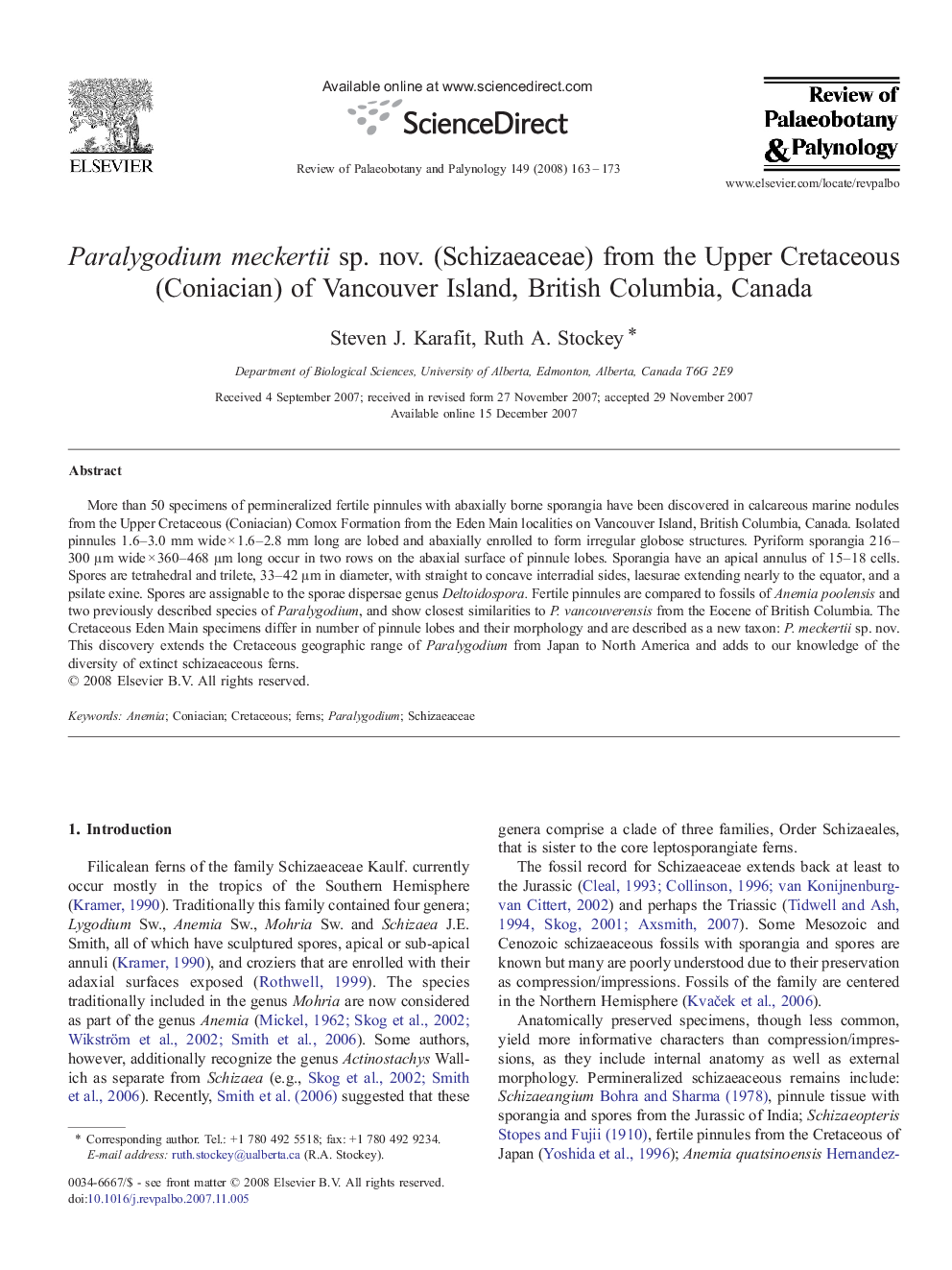| Article ID | Journal | Published Year | Pages | File Type |
|---|---|---|---|---|
| 4750940 | Review of Palaeobotany and Palynology | 2008 | 11 Pages |
More than 50 specimens of permineralized fertile pinnules with abaxially borne sporangia have been discovered in calcareous marine nodules from the Upper Cretaceous (Coniacian) Comox Formation from the Eden Main localities on Vancouver Island, British Columbia, Canada. Isolated pinnules 1.6–3.0 mm wide × 1.6–2.8 mm long are lobed and abaxially enrolled to form irregular globose structures. Pyriform sporangia 216–300 μm wide × 360–468 μm long occur in two rows on the abaxial surface of pinnule lobes. Sporangia have an apical annulus of 15–18 cells. Spores are tetrahedral and trilete, 33–42 μm in diameter, with straight to concave interradial sides, laesurae extending nearly to the equator, and a psilate exine. Spores are assignable to the sporae dispersae genus Deltoidospora. Fertile pinnules are compared to fossils of Anemia poolensis and two previously described species of Paralygodium, and show closest similarities to P. vancouverensis from the Eocene of British Columbia. The Cretaceous Eden Main specimens differ in number of pinnule lobes and their morphology and are described as a new taxon: P. meckertii sp. nov. This discovery extends the Cretaceous geographic range of Paralygodium from Japan to North America and adds to our knowledge of the diversity of extinct schizaeaceous ferns.
